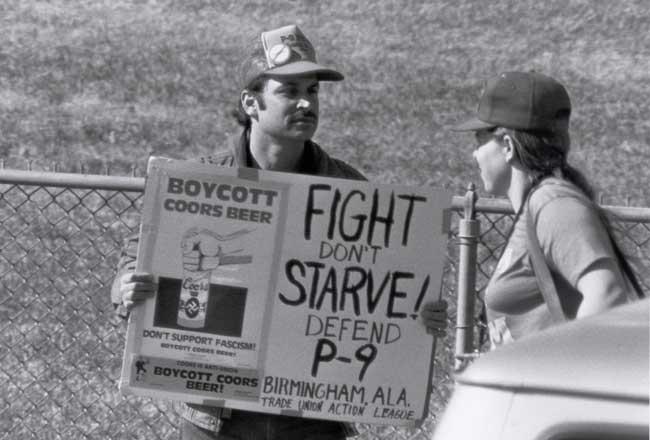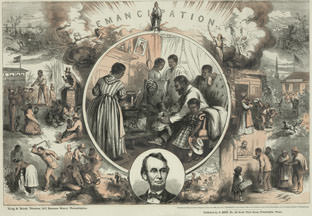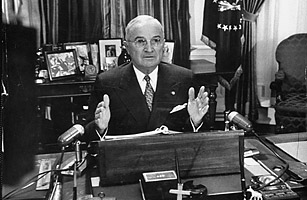
This Day in Labor History: April 14, 1975. The Bunker Hill Mining Company in Kellogg, Idaho announced that women working in its smelter would need to be sterilized to retain their jobs! Let's talk about this horrifying incident, including an unsupportive union! 

Bunker Hill was founded in the late 1890s and became one of the nation’s largest producers of lead and zinc. Until 1943, women were not allowed to work in the lead smelter. That changed briefly because of World War II, but they were again banned in 1946.
In the 1970s, Bunker Hill employed around 1600 people. Of them, nearly 100 were women. 22 worked in the lead smelter area. By the 1970s, Americans’ concern over lead poisoning, both on the job and in the nation at large had grown significantly.
The nation was moving toward banning leaded gasoline and both environmentalists and some labor unions fought for greater restrictions on the exposure of working people to all sorts of toxic materials, especially lead.
Bunker Hill was a union mine, its workers represented by the United Steelworkers of America. But the USWA was not particularly comfortable with female members.
In 1973, the EEOC, Department of Labor, and Department of Justice filed suit against the nation’s 9 largest steel companies and the USWA, charging them with discriminatory hiring practices that extended through the mills.
That the union was at fault too is depressing, but on target with a lot of organized labor in traditionally male physically challenging work at this time.
The settlement agreed to give $31 million in back pay to 40,000 women and minorities in the mills and to set hiring goals of 25% of supervisory positions and 50% of craft jobs going to women or minorities.
Neither the union nor the companies really wanted this to happen. But the EEOC settlement reopened the lead smelter to women.
Bunker Hill’s response to the EEOC suit was to cloak itself in a fetal rights argument, simply banning most women from the job. The company stated publicly that it “is willing to be criticized for not employing some women–but not for causing birth effects.”
What it was not willing to do was to limit exposure of all workers to lead. Effectively, Bunker Hill decided to define women primarily as childbearers and operate accordingly.
But as ACLU lawyer Joan Bertin stated, the real reason was that companies didn’t want women working in these jobs because of beliefs they were less efficient and argued, “The price of safety cannot be the loss of civil and constitutional rights.”
Thus if women wanted to work in the lead smelter, they could. But the company wanted no responsibility for the poison the women would ingest. So they had to be sterilized.
29 women refused and were transferred to safer work that paid significantly less and reinforced the gender norms in the mill. At least three women did receive sterilization in order to keep their jobs.
The women at Bunker Hill turned to their union for help. The USWA refused to get involved.
The union said the fight would be too expensive. It claimed that fighting this would cause more problems for women throughout the steel industry. It also worried for the future of the mill as the industry was already declining in the United States.
Mostly, though the union just didn't want women in those jobs.
The women then went to the Idaho Human Rights Commission. It developed a compromise allowing women to be paid the same rates as if they worked at the smelter
Both the company and women rejected this idea; the company because of the cost, the workers for the principle. The women then filed a suit with the EEOC in January 1976. EEOC endorsed the same compromise as the IHRC.
Too many unionists did not care much about this case, including USWA officials. On the other hand, Tony Mazzocchi, safety director for the Oil, Chemical, and Atomic Workers and the most important figure in the union environmentalism of the 1970s and early 1980s, stated bluntly:
“Ultimately, it will be quite clear that women and men alike suffer from exposure to lead and other toxic chemicals. When that happens, the industry initiative may be to have men sterilized. We will then enter the age of the neutered worker.”
OSHA stepped into this debate. President Carter’s OSHA head was Eula Bingham, and as an advocate for both feminism as well as women’s rights, Bingham was furious at Bunker Hill’s sterilization policy.
As she noted, no one suggested men should be banned from workplaces where toxic exposure might lead to their sterilization. It’s also likely that OSHA wanted to use Bunker Hill as an example in order to get companies to comply with its stricter national lead standard.
In 1980, OSHA filed suit, fining Bunker Hill $82,000 for 108 occupational safety and health violations, including $10,000 for the sterilization policy. But after Reagan took the presidency in 1981, OSHA dropped the case.
Reagan’s OSHA already stopped referring to it as a “sterilization policy,” instead calling it an “exclusionary policy,” a significant rhetorical move.
But even before Bingham became involved in fighting the broader problem of discrimination based upon defining women as childbearers, the Idaho women had accepted defeat. The EEOC offered the same compromise as the Idaho Human Rights Commission.
The women accepted their higher wages, but future women would not have the opportunity for those high-paying jobs.
Within weeks, companies including Union Carbide, Dow Chemical, Firestone, General Motors, and AT&T all instituted similar programs that effectively excluded women from high-paying, dangerous work.
In the end, the women believed they had been victimized not only by their employer but by the USWA and the government. The union had done basically nothing for them. The EEOC did not want to get involved.
Women in other dangerous trades would have to continue fighting for equal access to work, a fight that would continue well into the 1980s.
In 1979, the Labor Occupational Health Program made a film about lead exposure featuring this struggle. You can watch a chunk of it here. Pretty good stuff.
Although it is mentioned in several places, I don’t think there is a complete scholarly discussion of this event. I relied in part on Sara Dubow, Ourselves Unborn: A History of the Fetus in Modern America, which discusses the case for a few pages.
Back Friday to discuss the 1947 Texas City explosion, one of the worst workplace disasters in American history.
• • •
Missing some Tweet in this thread? You can try to
force a refresh







